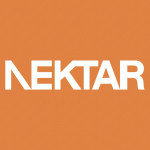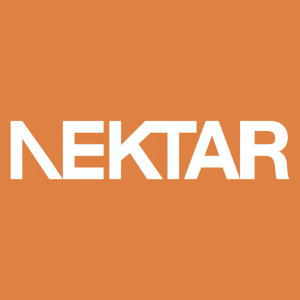Welcome to our dedicated page for Nektar Therapeutics SEC filings (Ticker: NKTR), a comprehensive resource for investors and traders seeking official regulatory documents including 10-K annual reports, 10-Q quarterly earnings, 8-K material events, and insider trading forms.
Clinical trial milestones, partnership revenue disclosures, and intensive R&D spending make Nektar Therapeutics (NKTR) filings anything but light reading. If you are digging through a 300-page report to learn how rezpegaldesleukin trials affect cash burn or combing an 8-K for collaboration updates, you know the challenge.
Stock Titan turns that complexity into clarity. Our AI-powered summaries present the Nektar Therapeutics annual report 10-K simplified, isolating segment spending, royalty obligations, and pipeline timelines in plain English. The latest Nektar Therapeutics quarterly earnings report 10-Q filing arrives here seconds after EDGAR posts, alongside Nektar Therapeutics Form 4 insider transactions real-time. You’ll also see Nektar Therapeutics insider trading Form 4 transactions with alerts, Nektar Therapeutics 8-K material events explained, and the full Nektar Therapeutics proxy statement executive compensation details—all updated in real time.
Use the platform to compare clinical development costs quarter over quarter, monitor Nektar Therapeutics executive stock transactions Form 4, or download redlined drafts for deeper review. Analysts rely on Nektar Therapeutics earnings report filing analysis, auditors consult collaboration footnotes, and newcomers head to our section on Nektar Therapeutics SEC filings explained simply for step-by-step guidance. Whether you’re tracking cash runway or mapping immunotherapy competition, understanding Nektar Therapeutics SEC documents with AI means less time parsing and more time making decisions, all from one comprehensive, continuously updated hub.
Nektar Therapeutics announced that Mark A. Wilson will step down as Chief Legal Officer, effective December 31, 2025. The company states that his departure is not due to any disagreement regarding Nektar’s operations, policies, or practices, which indicates this is presented as an orderly transition rather than a dispute-driven change.
Elizabeth Zhang, currently Vice President, Legal and Corporate Counsel, will assume Mr. Wilson’s responsibilities. She joined Nektar in 2021 and previously worked at major law firms Cravath, Swaine & Moore LLP and Gibson, Dunn & Crutcher LLP. Ms. Zhang holds degrees from Harvard College, the University of Oxford, and Harvard Law School, suggesting continuity in legal leadership with a strong academic and professional background.
Nektar Therapeutics filed a Form S-8 to register 250,000 shares of common stock (par value $0.0001) reserved for issuance under its 2025 Inducement Plan.
The Board adopted the plan on November 6, 2025, without stockholder approval pursuant to Nasdaq Listing Rule 5635(c)(4). The plan will be administered by the Organization and Compensation Committee.
Eligibility is limited to individuals who meet Nasdaq’s inducement grant standards. Permitted awards include nonqualified stock options, restricted stock, restricted stock units, stock appreciation rights, stock bonuses, and other stock-based awards. This registration facilitates equity grants used to attract and hire qualified talent under the inducement exception.
Nektar Therapeutics launched an at-the-market offering to sell up to $110,000,000 of common stock under an Equity Distribution Agreement with Piper Sandler & Co. and BTIG, LLC. Sales may occur from time to time as “at the market offerings” under Rule 415, and the agents will use commercially reasonable efforts. The program is part of Nektar’s existing $300,000,000 shelf registration. The sales agents are deemed underwriters and will receive a 3.0% commission on gross sales.
Nektar plans to use net proceeds for general corporate purposes, including research and clinical development of rezpegaldesleukin, NKTR‑0165, and NKTR‑255, plus working capital and potential investments. Nektar’s common stock trades on Nasdaq as NKTR; the last reported sale price was $57.97 per share on November 10, 2025. Shares outstanding were 19,652,513 as of September 30, 2025.
Nektar Therapeutics furnished new clinical results from its ongoing Phase 2b REZOLVE-AD trial in atopic dermatitis. The study enrolled 393 patients; a pre-planned analysis of 99 participants with a history of asthma and ACQ-5 data showed all three rezpegaldesleukin doses reduced mean ACQ-5 scores at week 16, with the 24 μg/kg q2w and 24 μg/kg q4w arms reaching p<0.05 versus placebo. The placebo arm showed overall worsening.
Among patients with baseline ACQ-5 ≥0.5 (n=53), at least half achieved a clinically significant improvement across all active arms, compared to 13% for placebo. In those with uncontrolled asthma at baseline (ACQ-5 ≥1.5; n=25), all active doses improved mean ACQ-5 at week 16 with statistical significance, with placebo-adjusted reductions ranging 1.0–1.4. In a crossover cohort of 42 initial placebo patients treated with 24 μg/kg q2w, observed responses at crossover week 24 were: EASI-75 60% (n=30), vIGA-AD 0/1 33% (n=30), EASI-90 37% (n=30), and Itch NRS 50% for baseline ≥4 (n=28). Safety was generally consistent with the previously reported profile.
Nektar Therapeutics filed its Q3 2025 10‑Q, reporting continued operating losses alongside a strengthened cash position. Total revenue was $11.8 million, primarily from non‑cash royalty revenue related to prior royalty sales, down from $24.1 million a year ago. The company reported a net loss of $35.5 million for the quarter and $128.0 million year‑to‑date.
Cash, cash equivalents and marketable securities totaled $270.2 million as of September 30, 2025. During the quarter, Nektar completed an underwritten public offering of 4,893,618 shares at $23.50 per share for approximately $107.2 million in net proceeds, issued 600,198 shares under its at‑the‑market program for $34.3 million in net proceeds, and saw exercise of a 1,666,667‑share pre‑funded warrant. A one‑for‑fifteen reverse stock split became effective on June 8, 2025.
Following the December 2024 sale of its Huntsville manufacturing facility, Nektar no longer records product sales and recognized a $0 product sales line this quarter. The company continues Phase 2b programs for rezpegaldesleukin and recorded a small loss from its equity method investment in Gannet BioChem.
Nektar Therapeutics filed an 8-K stating it has furnished a press release announcing its financial results for the quarter ended September 30, 2025. The company attached the press release as Exhibit 99.1 titled “Nektar Therapeutics Reports Third Quarter 2025 Financial Results.”
The information is furnished under Item 2.02 and is expressly stated as not deemed “filed” under Section 18 of the Exchange Act and not incorporated by reference into other SEC filings. Nektar’s common stock trades on the Nasdaq Capital Market under the symbol NKTR.
Nektar Therapeutics director Roy A. Whitfield was granted 8,000 stock options on 09/30/2025. The option award has an exercise price of $56.90 and an expiration date of 09/29/2033. The filing shows the options are directly beneficially owned by the reporting person and will vest in substantially equal monthly installments over the one-year period beginning on September 30, 2025.
NEKTAR THERAPEUTICS (NKTR) Form 4 summary: Director Greer R. Scott received a non-derivative award in the form of a stock option grant on 09/30/2025 for 8,000 options with a stated conversion/exercise price of $56.90. The reported option is exercisable beginning 09/29/2033 and the filing shows 8,000 shares benefically owned following the transaction, held directly. The filing notes the option vests in substantially equal monthly installments over the one-year period beginning on 09/30/2025. The form was signed by an attorney-in-fact on 10/01/2025. The document discloses a standard director compensation award rather than a sale or disposition.
Diana Brainard, a director of Nektar Therapeutics (NKTR), was granted an option for 8,000 shares on 09/30/2025. The option has an exercise price of $56.90 and is recorded as a direct holding of 8,000 underlying shares following the transaction. The option vests in substantially equal monthly installments over the one-year period beginning on September 30, 2025, and the instrument shows an exercisable/expiration date of 09/29/2033. The Form 4 is signed by an attorney-in-fact on 10/01/2025, reporting the acquisition (code A) of the derivative security.
Jeffrey Robert Ajer, a director of Nektar Therapeutics (NKTR), acquired a derivative grant of 8,000 stock options on 09/30/2025. The options have a stated conversion/exercise price of $56.9 and the filing reports 8,000 underlying shares of common stock. The filing notes the options vest in substantially equal monthly installments over the one-year period beginning on September 30, 2025. The form indicates an expiration/related date of 09/29/2033 and shows the shares are beneficially owned directly following the transaction. The Form 4 was signed by an attorney-in-fact on 10/01/2025.


